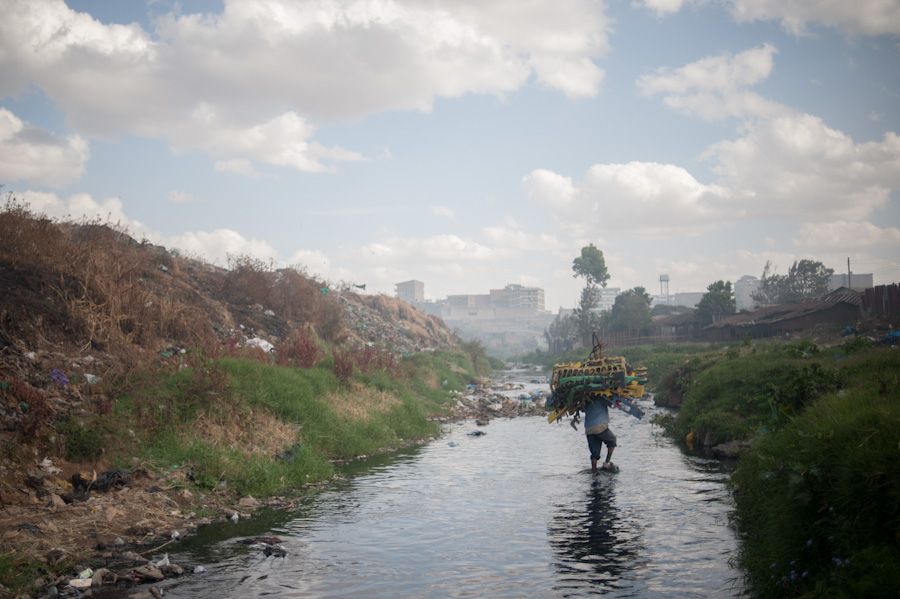Micah Albert and I arrived in Dandora, a municipal dumpsite on the outskirts of Nairobi, with a challenging question--one posed to us by nearly every editor who is considering this story: What makes Dandora different? In a competitive environment of shrinking budgets and space for international news, our ability to answer this question will likely determine whether editors decide to publish or pass on this project.
On the one hand, we note that Dandora is different from any other dumpsite around the World in scope (more than 1 million people live in and around the fenceless site), history (created in the mid 1970s it was declared full more than a decade ago, though dumping continues at a rate of 2,000 tons of waste per day), scale (it covers 30 acres of land), and impact (a 2007 UN Environmental Program study found that 154 of 328 tested children suffered from respiratory problems directly attributed to the site).
On the other hand, while Dandora might represent a tipping point of inaction and neglect, the problems that led to Dandora can be found in many countries throughout the world. The ubiquitous, devastating nature of the Dandora story makes it significant both as a point of international news and as a warning for other rapidly growing and industrializing cities without safe waste-management policies.
We don't, however, want this story to simply be about death and government inaction. The site also marks a provocative center of investigation because there are currently two passionate, yet starkly different, perspectives within the community regarding its future course. One group argues that Dandora’s continued presence is essential for the survival of the people living there; they actually protested its relocation a few months ago. They believe that Dandora provides the community with an income opportunity that the government wouldn’t replace if the site were decommissioned. Other groups, supported by several international organizations, are demanding a better life for everyone living near Dandora. “Stop dumping death on us” is one such Korogocho-based campaign that is trying to empower people in the surrounding slums to demand more of themselves and their city council.
Through this project we hope to capture many of these voices. Statistics and rigorous health studies on Dandora's impact on the surrounding environment and people have resulted in limited action. We hope that by revealing individual voices and stories we will provide another dimension to these studies and force the national and international community to look more closely at the struggles contained in Dandora. We hope to help foster a long overdue conversation on the waste management practices of Nairobi and on why so many voices have been ignored for so long.
